Affiliate Disclosure: I earn commissions if you shop through the links below at no additional cost to you.
Last Updated on October 7, 2024 by Jeremy
If you’re dreaming about escaping the cold Canadian winters and embracing tropical vibes, Costa Rica should be on your radar. Whether you’re cruising down the Pan-American Highway or setting up camp near lush rainforests, Costa Rica is an incredible destination for RV travelers looking for both adventure and tranquility.
Let’s dive into everything you need to know about camping in Costa Rica, including useful tools like the iOverlander app, the challenges of driving from Canada, and, of course, the must-try fly fishing experiences.
Using iOverlander to Find Campsites in Costa Rica
When you’re exploring a new country in an RV or travel trailer, finding the perfect campsite is crucial. Thankfully, there’s an awesome resource called iOverlander, an app that helps travelers locate campgrounds, rest stops, and even hidden gems like remote beach parking spots or quiet forest clearings.
One prime example is Tenorio’s Treasure Camping, nestled near the stunning Tenorio Volcano National Park.

This campsite offers an authentic experience surrounded by nature, with nearby trails leading to the famous Rio Celeste waterfall. Using iOverlander, you can read reviews from fellow adventurers and get all the details you need before heading to your next stop. It’s a must-have app for anyone exploring Costa Rica.
Best Time of Year to Camp in Costa Rica
Costa Rica’s climate varies greatly throughout the year, so planning your trip around the weather can make a big difference. There are two main seasons: the dry season and the green season (wet season), and each offers a different experience for campers.
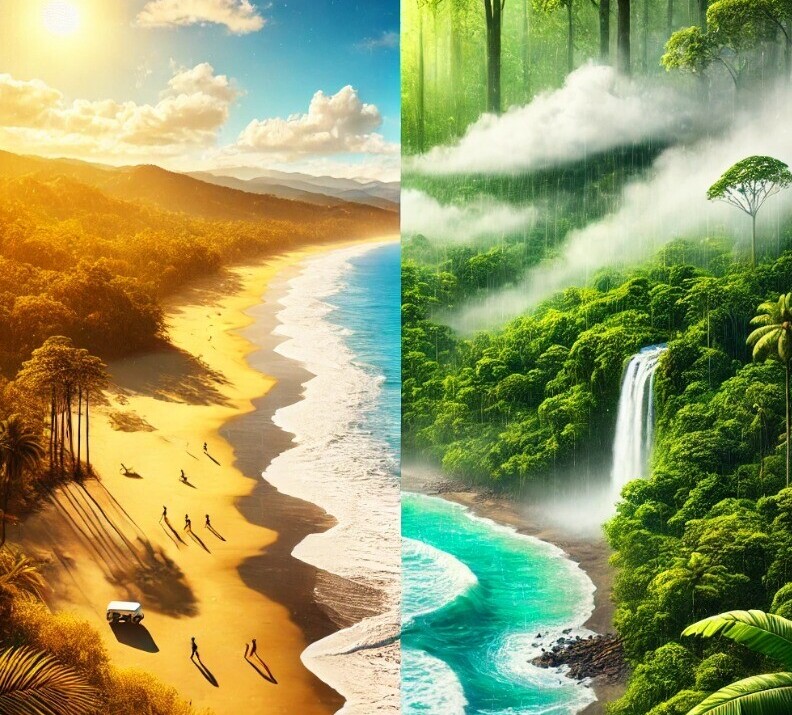
- Dry Season (December to April): This is Costa Rica’s peak travel season, known for its warm temperatures and sunny skies. It’s ideal for outdoor activities like hiking, beach camping, and sightseeing. Keep in mind, campgrounds may be busier, and prices for rentals or accommodations may be higher.
- Green Season (May to November): Known for frequent rain showers, this season brings out the lush green beauty of Costa Rica’s landscapes. While some roads may become muddy or impassable during heavy rains, this is also a fantastic time for budget travelers looking for quieter campsites. Plus, the rain brings out a different side of the country, including fuller waterfalls and flourishing wildlife.
If you’re planning to explore Costa Rica’s national parks or go fly fishing, check local weather conditions and road reports, especially if you’re traveling during the rainy season.
The Challenges of Driving from Canada to Costa Rica
If you’re up for a true adventure, driving from Canada to Costa Rica is a bucket-list road trip. However, it’s not without its challenges.
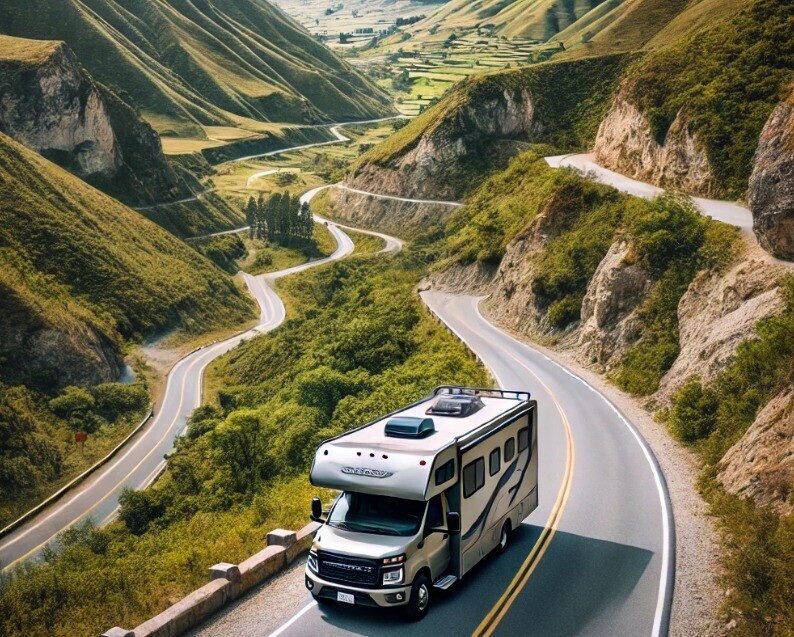
The route takes you along the Pan-American Highway, which stretches from Alaska all the way to Argentina, and includes some of the most stunning (and sometimes intimidating) stretches of road in the world.

But don’t worry—I’ve got you covered with tips to make the journey smoother.
Key Challenges to Consider:
- Border Crossings: Between Canada and Costa Rica, you’ll be crossing multiple country borders, each with its own set of regulations and procedures. Be prepared for varying paperwork requirements, including vehicle permits, insurance, and other protocols. Some travelers recommend hiring a border helper to guide you through the process, especially in busier areas.
- Road Conditions: While most of the Pan-American Highway is paved, there are sections—especially through Central America—that are less maintained. Be ready for potholes, winding mountain roads, and occasional detours. Having a solid spare tire and being prepared for unexpected breakdowns is a must.
- Gas Availability: While gas stations are plentiful in North America, Central America can be a little trickier. Always fill up when you can, and carry a jerry can with extra fuel, especially in rural areas.
- Safety Concerns: Like any long-distance trip, safety is a top priority. Stick to well-traveled routes, avoid driving at night, and check local travel advisories. Most travelers find Costa Rica safe and welcoming, but it’s always smart to stay informed.
Crossing the Darien Gap
A special note: The Darien Gap, located between Panama and Colombia, is an infamous part of the Pan-American Highway that’s impassable by vehicle. If you’re planning to continue further south, you’ll need to arrange a ferry or air transport for your vehicle. Keep this in mind when planning your route, as it can impact timing and logistics.
Despite the challenges, the journey down the Pan-American Highway is an unforgettable experience, offering stunning landscapes, vibrant cultures, and plenty of opportunities for adventure.
Things to Do While Camping in Costa Rica
Once you’ve made it to Costa Rica, it’s time to dive into the natural beauty and adventures the country offers. Here are some top things to do while camping in Costa Rica, making it more than just a place to park your RV.
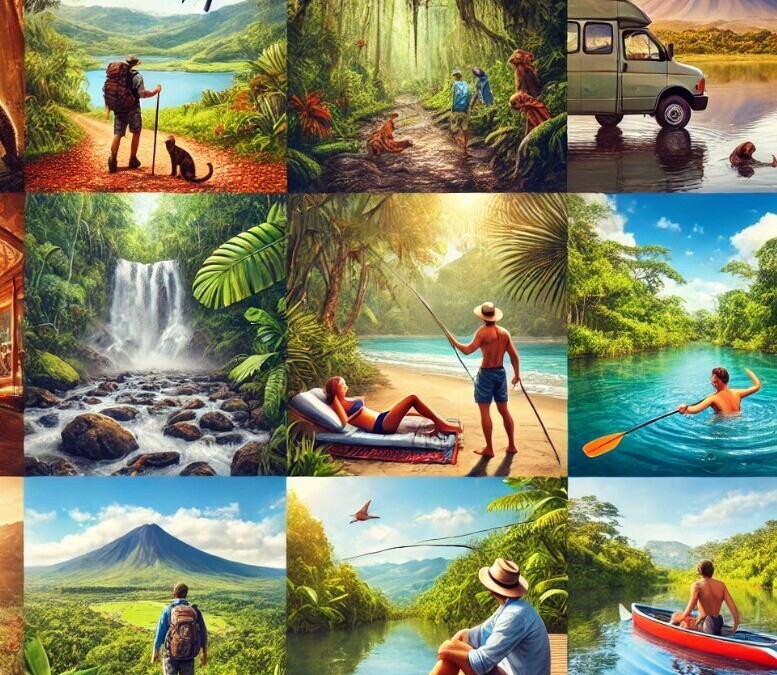
1. Explore Costa Rica’s National Parks
Costa Rica is known for its incredible biodiversity, with national parks that range from volcanoes to cloud forests. Manuel Antonio National Park and Corcovado National Park are two must-see spots. Whether you’re hiking through the jungle or relaxing on pristine beaches, you’re in for a treat.
2. Hot Springs and Volcanoes
Relax in the natural hot springs near Arenal Volcano or Tenorio Volcano National Park. After a day of exploring, there’s nothing like soaking in thermal waters while taking in the stunning mountain views.
3. Fly Fishing Adventures in Costa Rica
One of the highlights of camping in Costa Rica is the opportunity to try your hand at fly fishing. The rivers, lakes, and coastlines are teeming with fish species that make for an unforgettable fishing experience. Whether you’re a seasoned angler or just starting out, Costa Rica offers world-class fishing opportunities.
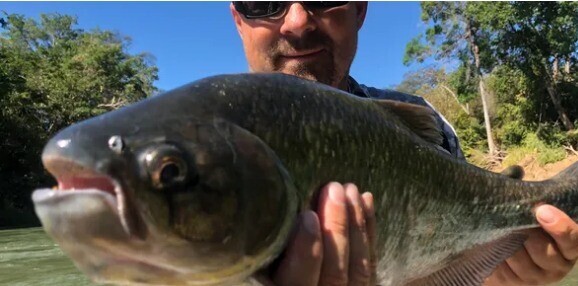
For the best fishing experience, head to Rio Nino Outfitters. They offer expert guiding to help you catch everything from machaca and guapote to the larger tarpon. Their experienced guides will take you to some of the top-rated fishing spots in the area, providing high-quality gear and personal instruction.
Rio Nino Outfitters is perfect for family-friendly fishing trips, and whether you’re wading in the river or floating along a scenic lake, the natural beauty surrounding you will enhance your fishing adventure. With a focus on safety and fun, it’s an ideal activity for anyone visiting Costa Rica.
Feeling ready to cast your line? Click the button below to book your fly-fishing adventure today!
RV Rentals and Campsite Facilities in Costa Rica
If driving your RV from Canada isn’t an option, you can still experience the joys of RV camping by renting an RV locally. Several companies offer RV rentals, and many campsites are well-equipped for RV travelers. Here’s what you can expect from most Costa Rican campsites:
- Electricity and Water: Many sites offer electricity hook-ups and potable water.
- Dump Stations: A number of larger campgrounds provide dump stations for wastewater.
- Basic Amenities: Showers, restrooms, and even laundry facilities can often be found at larger sites, especially near popular tourist spots.
Popular RV Campgrounds in Costa Rica:
- Camping Tuasa: Located near the beaches of Guanacaste, this campground is ideal for RVers looking to soak in some sun.
- Camping Sybacol: A favorite among nature lovers, this campsite offers great views of the surrounding forests and is well-equipped for RV camping.
Wildlife Safety Tips
Camping in Costa Rica offers incredible opportunities to encounter wildlife, but it’s essential to respect the animals and stay safe.

Here are a few tips:
- Food Storage: Keep food sealed and stored properly to avoid attracting unwanted visitors like raccoons or monkeys.
- Snake Safety: Costa Rica is home to both venomous and non-venomous snakes. Be cautious when hiking and avoid walking through dense foliage without proper gear.
- Insect Protection: Mosquitoes can carry diseases like dengue, so bring insect repellent and consider mosquito nets for sleeping.
Additionally, be aware of wild cats, including jaguars and ocelots, if you’re camping in remote areas. These animals typically avoid humans, but it’s always good to be vigilant.
Local Cultural Etiquette
Respecting local customs is key when traveling anywhere, and Costa Rica is no different. Here are a few tips to help you blend in:
- Greetings: A friendly “buenos días” or “pura vida” will go a long way when interacting with locals.
- Basic Spanish: While many Costa Ricans speak English, learning a few key phrases in Spanish can enhance your experience.
- Food: Try local dishes like gallo pinto (rice and beans) and fresh tropical fruit. Costa Rican food is simple, healthy, and delicious!
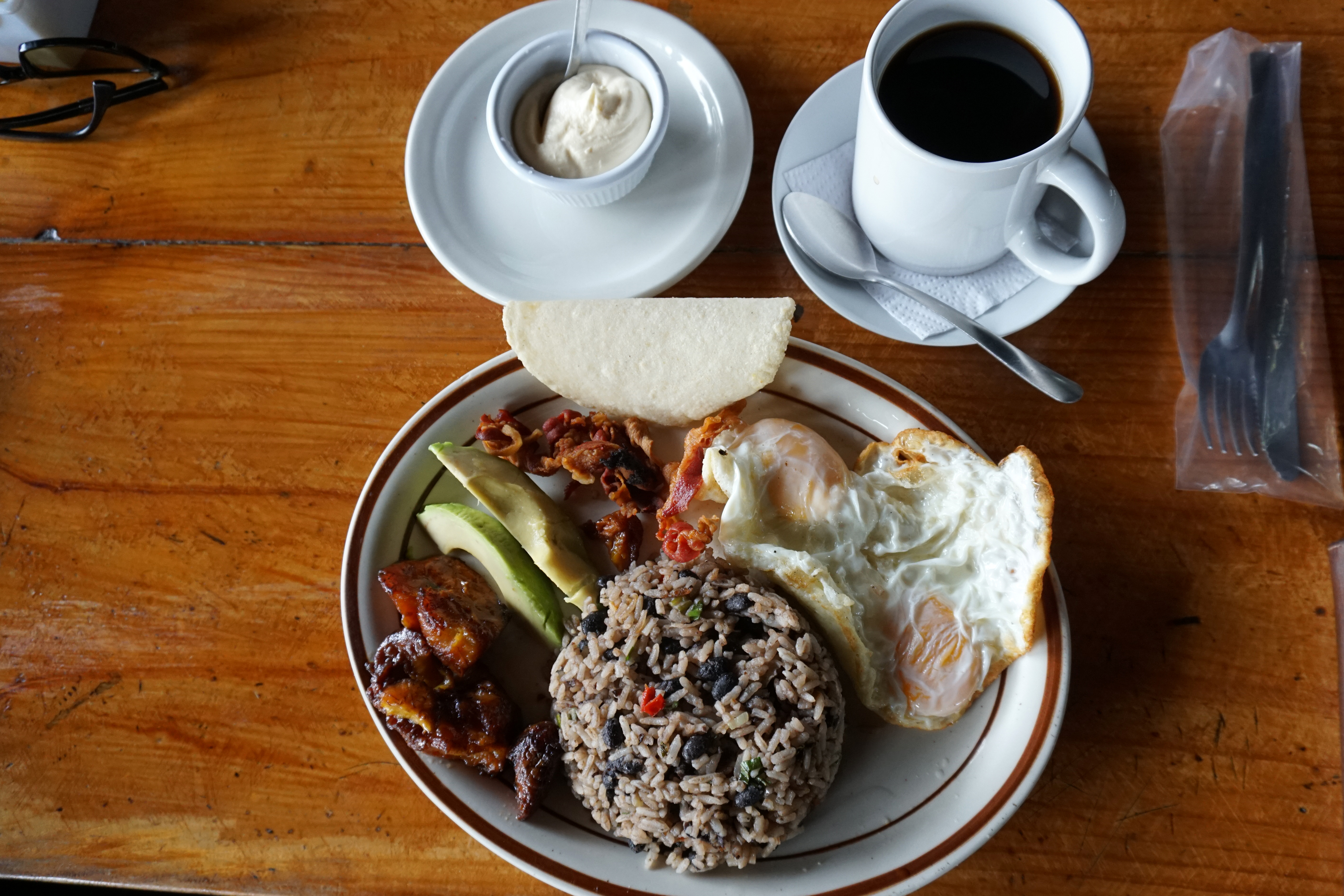
By Mariordo (Mario Roberto Durán Ortiz) – Own work, CC BY-SA 4.0, Link
Sustainable Camping Practices
Costa Rica is a leader in eco-tourism, and many campgrounds and parks have strict rules about sustainability. To camp responsibly, consider the following:
- Leave No Trace: Always clean up your campsite, including disposing of trash and food waste.
- Recycle: Many campgrounds have recycling stations. Use them whenever possible.
- Support Local Businesses: Opt for eco-friendly tours and services that prioritize sustainability.
Camping in Costa Rica’s national parks offers a chance to experience pristine ecosystems up close, so doing your part to minimize impact is essential.
Conclusion: Embrace the Ultimate RV Adventure in Costa Rica
Camping in Costa Rica offers the perfect blend of adventure, relaxation, and cultural immersion. From navigating the rugged terrain of the Pan-American Highway to discovering hidden campsites through the iOverlander app, the journey itself is an experience like no other. Whether you’re soaking in natural hot springs, hiking through lush rainforests, or fly fishing in crystal-clear rivers, Costa Rica truly has something for every kind of traveler.
As you plan your trip, remember to respect the local wildlife and embrace sustainable camping practices to leave the environment as pristine as you found it. Whether you’re renting an RV locally or driving down from Canada, Costa Rica promises to be an unforgettable destination.
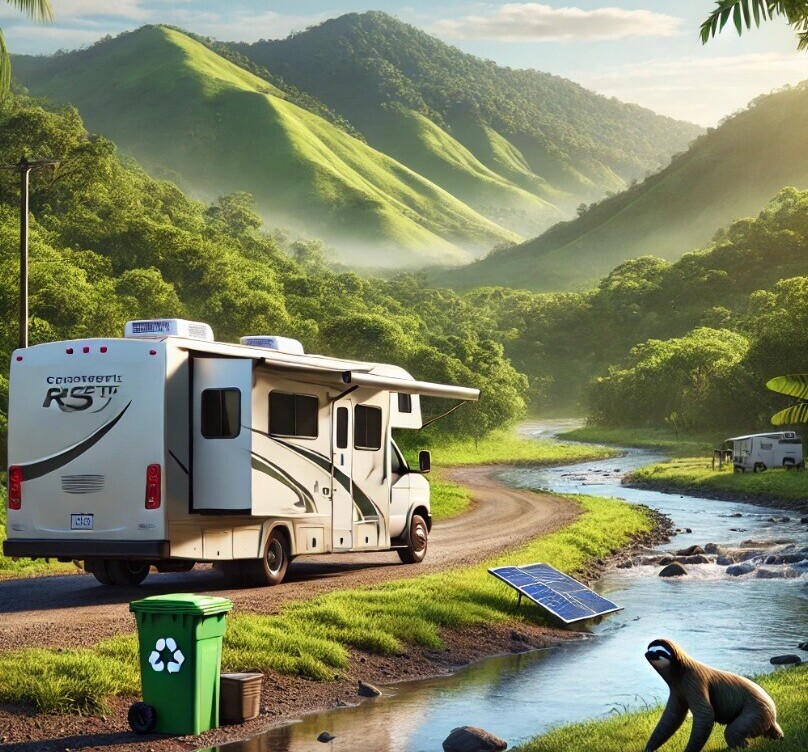
Ready to start your adventure? Don’t wait! Download the iOverlander app, book your fly-fishing tour with Rio Nino Outfitters, and hit the road for the RV trip of a lifetime. Costa Rica’s incredible landscapes and experiences are waiting for you—book your adventure today!
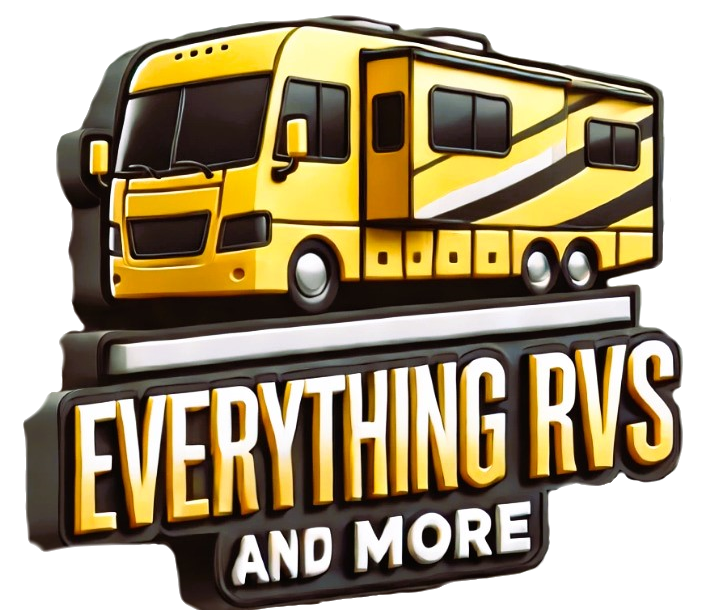

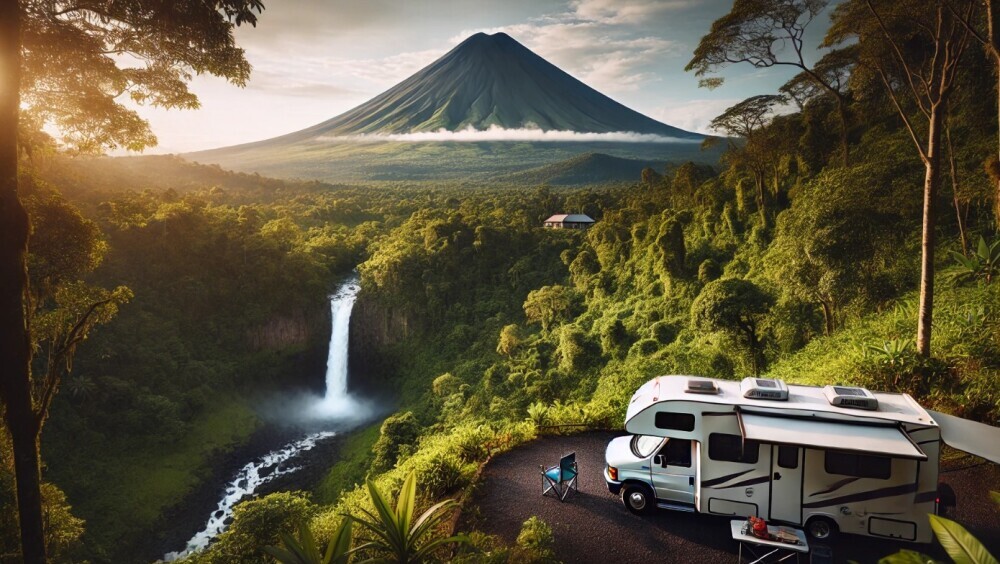




.jpg/:/cr=t:5.56%25,l:0%25,w:100%25,h:88.89%25/rs=w:1240,h:620,cg:true)
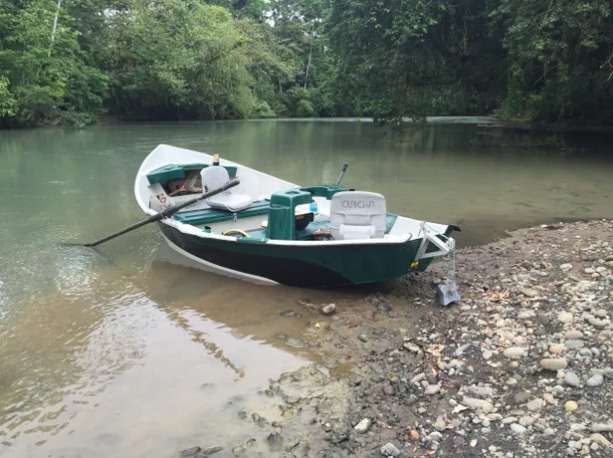





Leave a Reply